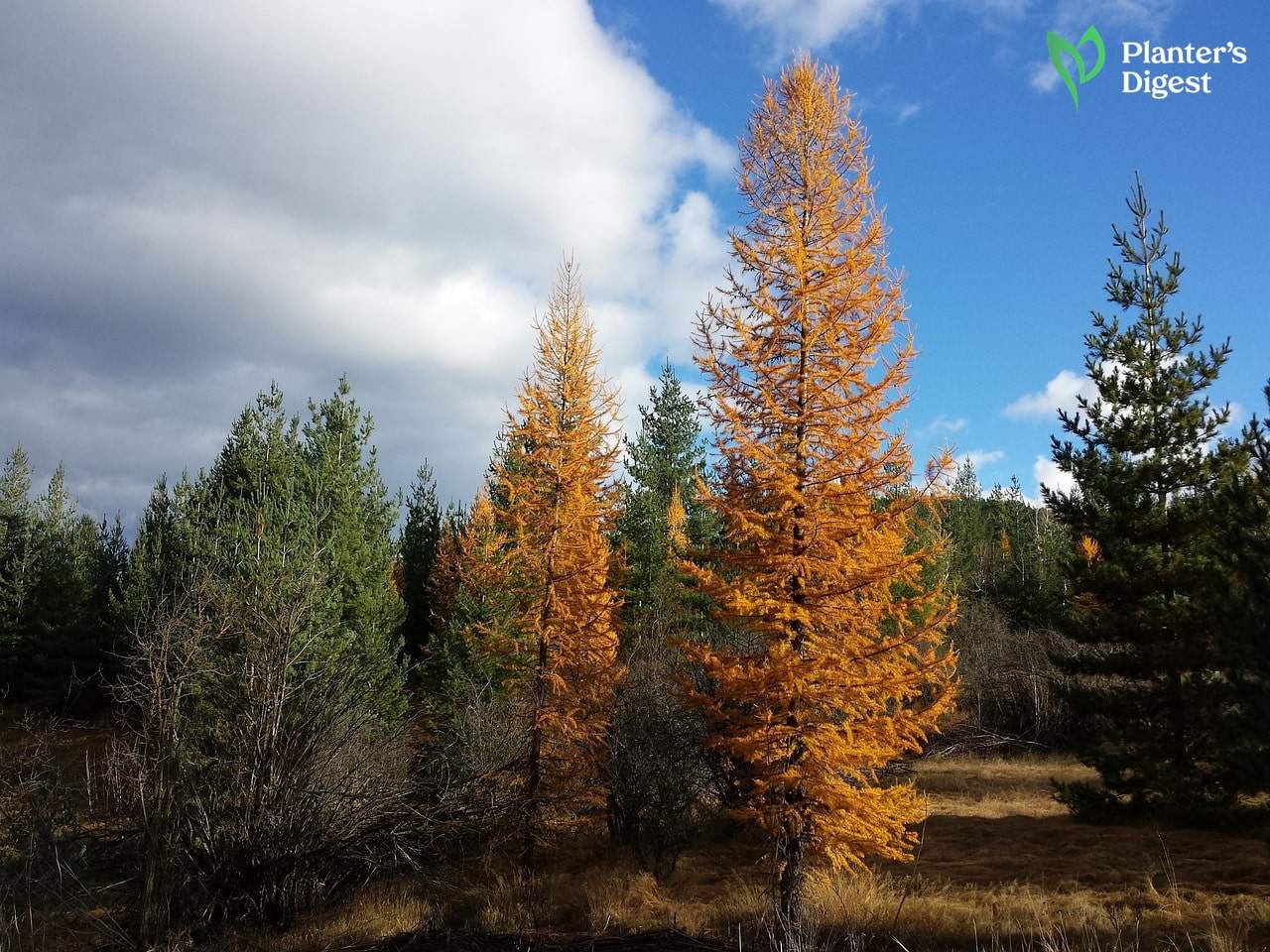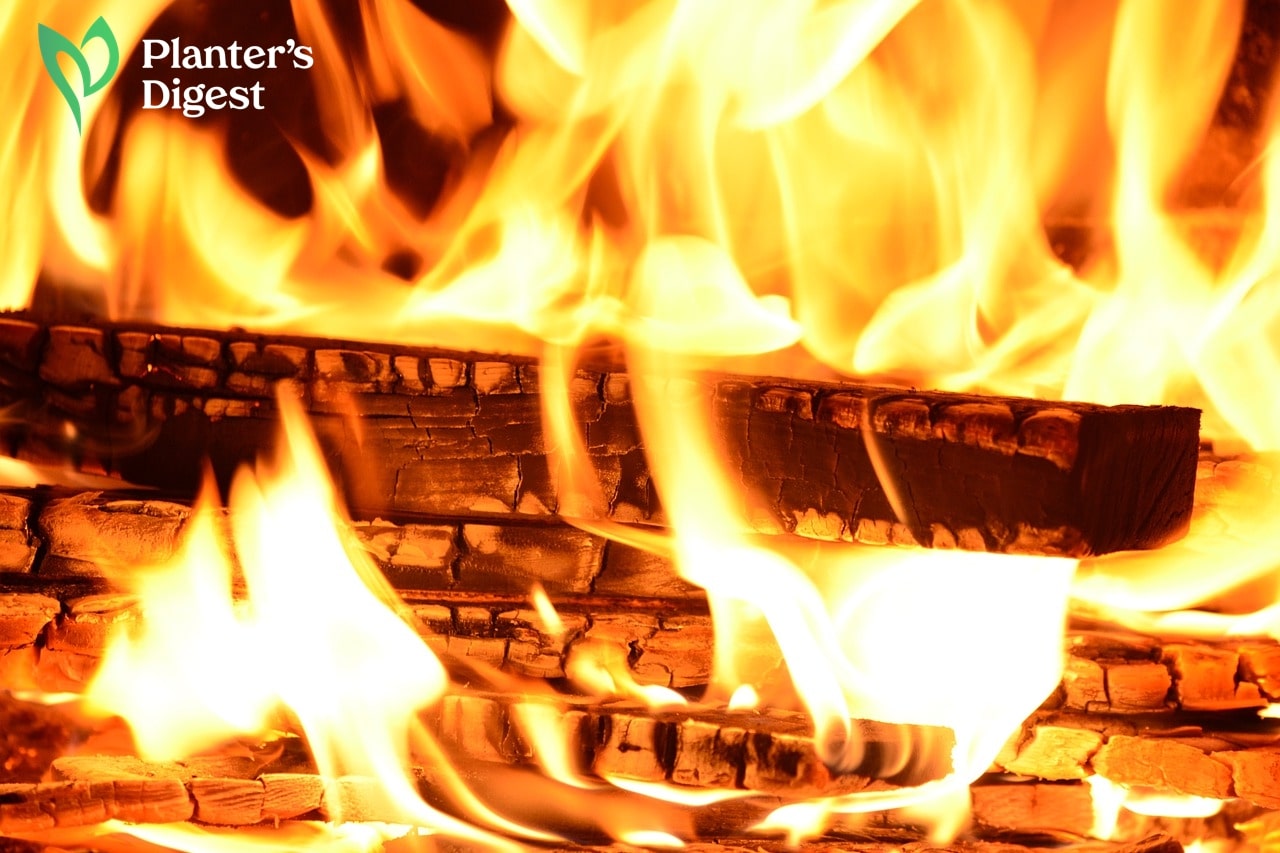
Tamarack trees are premium softwoods widely cultivated for paper-making or building posts and poles. Even its bark is used to make tea to relieve colds, sore throats, upset stomachs and fatigue.
With all its versatile benefits to humankind, can we add good firewood to its many uses?
In this article, let’s look at tamarack’s unique fire characteristics and how it compares to other popular types of firewood in the market.
Is tamarack a good firewood?
Tamarack is a decent-quality firewood producing 22.6 million BTUs per cord with low smoke and a mildly pleasant fragrance. It is a great kindling wood for shoulder seasons or for indoor and outdoor burning with other firewood.
Tamarack firewood is suitable indoors and outdoors because of its moderate heat output and low smoke and creosote production.
However, because it contains a fair amount of resin, it tends to pop and spark when burning. So, you still have to take extra precautions when burning them in an open fireplace.
Here’s a table of tamarack’s characteristics as firewood.
| Tree Name | Tamarack |
| Common Name | Larch |
| Scientific Name | Larix laricina |
| Family | Pinaceae |
| Height | 40 to 80 feet |
| Life Span | 180 to 300 years |
| Type of Wood | Softwood |
| Dry Weight (lbs per cord) | 3,271 |
| Green Weight (lbs per cord) | 3,995 |
| Seasoning Time | 6 to 12 months |
| Heat Content (million BTUs per cord) | 22.5 |
| Resin Content | Average |
| Splitting Difficulty | Easy |
| Smoke | Low |
| Smell | Mildly Pleasant |
| Coal Production | Low |
| Creosote Build-up | Low |
What are the fire characteristics of tamarack wood?
Tamarack firewood is easy to split with moderate heat output, average resin content, and mildly pleasant smell but with a low moisture level, creosote build-up, smoke output and coal production.
Read on and learn about each fire-burning property.
1. Easy to Split
Tamarack is straight-grained firewood with a few knots, making it easy to split. It’s best to split it while it’s still green because once it begins to dry out, it will be harder to break the wood fibers.
You can split this wood manually with an ax. But to more effectively deal with the wrist-jarring knots at the crotch of the tamarack wood, we recommend using a hydraulic splitter to crack on the gnarly part of the firewood.
2. Average Resin Content
Conifer trees contain a lot of resin, and tamarack is one of them. It has moderate resin content that leads to pops and sparks while the firewood burns.
So, if you’re setting this firewood ablaze in an open fireplace, stay vigilant for carpet burns or fires.
3. Mildly Pleasant Smell
Tamarack emits a mildly pleasant smell. It has a gentle yet noticeable fragrance that can fill up your home as it burns.
Unfortunately, tamarack is not recommended for cooking, meat smoking or grilling because it burns fast and does not add much flavor to the food or provide an even temperature profile.
4. Low Moisture Level
Tamarack is also called a hard softwood because of its low moisture level. In fact, when it’s freshly cut, its moisture level reaches only up to 60%, much lower than cedar or sycamore wood.
5. Moderate Heat Output
Generally, dense woods, like hardwoods, produce more heat. But in tamarack’s case, it’s a dense softwood producing a moderate heat output of 22.5 BTU million per cord.
You can combine tamarack with other wood varieties to maximize the heat production.
Check out the table below to see how tamarack compares with other firewood.
| Firewood | Heat Output (million BTUs per cord) |
| Osage Orange | 32.9 |
| Gambel Oak | 30.7 |
| Beech | 27.5 |
| White Ash | 24.2 |
| Tamarack | 22.5 |
| Chesnut | 18 |
| Cottonwood | 15.8 |
| Basswood | 13.8 |
| Buckeye | 13.8 |
6. Low Creosote Build-Up
Burning tamarack firewood will not leave you with creosote in your chimney, as long as the wood is properly seasoned.
Still, check your flue or chimney at least once a year to clear up the tar-like creosote to prevent any fire hazard in your home.
7. Low Smoke Output
Another perk of using tamarack firewood is its low smoke output. Most people use tamarack in wood stoves or fireplaces with doors that can contain smoke.
Of course, you’ll only enjoy this benefit when you burn seasoned wood. Otherwise, burnt green wood will leave your house covered in smoke.
It’s also inefficient to burn unseasoned wood because the fire will only use its energy to evaporate water from the wood fires rather than give out more heat.
8. Low Coal Production
When burnt wood creates coals, it helps retain the heat, with less refilling of wood to the fire and makes it easier to re-ignite the fire after a few hours. However, tamarack firewood produces little coal, causing it to burn out quickly.
Pros and Cons of Using Tamarack as Firewood
Below is a comparative table of the pros and cons of using Tamarack firewood.
| Advantages | Disadvantages |
| Moderate heat output | Pops and sparks when burned |
| Low smoke and creosote output | Low coal production |
| Mildly pleasant smell | |
| Rot-resistant |
Tamarack emits moderate heat levels with a mildly pleasant smell, low smoke, and creosote build-up. These make it a great kindling firewood for shoulder seasons.
Because of its resin content, Tamarack produces excessive sparking, so it’s best to use them in covered fireplaces.
You can store as much tamarack firewood as possible because they’re rot-resistant. They’re more rot-resistant than most softwoods without resin content.
Unfortunately, tamarack doesn’t produce a lot of coal, which means it burns fast. To extend its burn time and maximize its heat output, you can mix it with other types of firewood.
How does tamarack compare with other firewood?
Tamarack has a high heat output of 22.5 BTU million per cord compared to most softwoods.
Although it’s also quite dense for a softwood, Tamarack contains straight grains and few knots, making it easy to split.
Tamarack is the exception from the general rule that hardwoods produce less smoke and creosote than softwoods since it emits very low amounts of the smoke and creosote when burned.
Here’s how tamarack compares with other firewood.
| Firewood | Heat Output (million BTU per cord) | Splitting Difficulty | Coal Production |
| Tamarack | 22.5 | Easy | Low |
| Bur oak | 26 | Easy | Good |
| Maple | 25 | Easy | High |
| Green Ash | 20 | Easy | Good |
How long should you season tamarack wood?
Tamarack firewood dries out as quickly as within six months in hot and dry areas. But for those living in cooler areas, you’ll need 12 months to dry this firewood thoroughly.
Tamarack seasons faster than other premium hardwoods, so you can leave your stockpile and use it later in the year.
You can speed up seasoning time by splitting the wood into smaller pieces and stacking them in a dry storage space with regular airflow. Just make sure to cover the wood using a shed or a tarp to protect it against rain and snow.
FAQs on Tamarack Firewood
Tamarack makes good indoor firewood because of its moderate heat, low smoke, and creosote output. However, it is not recommended for open fireplaces because it tends to pop and spark due to its average resin content.
One cord of dry Tamarack wood weighs around 3,330 lbs, while green Tamarack weighs 4,000 lbs.
Tamarack firewood is best gathered and split between the winter and early spring seasons, with the least amount of resin and moisture for a quicker seasoning.
One cord of Tamarack wood can last between 8 to 10 weeks, depending on the type of fireplace, climate and how well the wood is seasoned.




